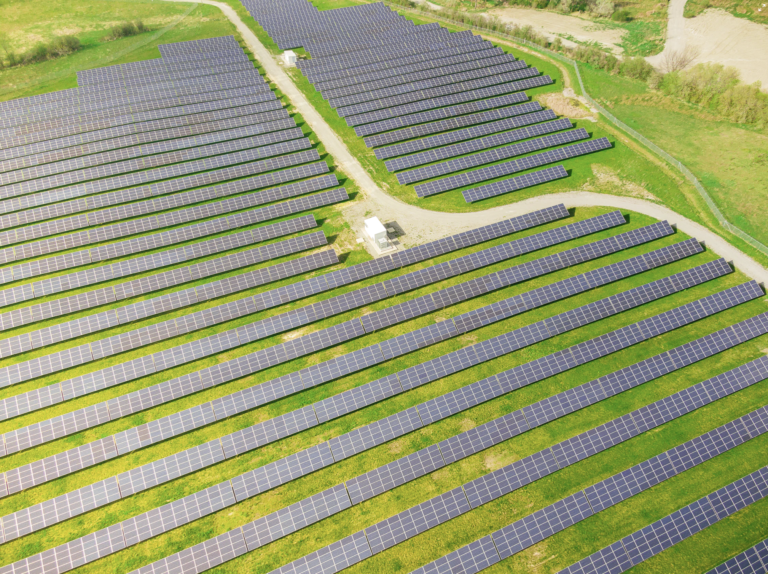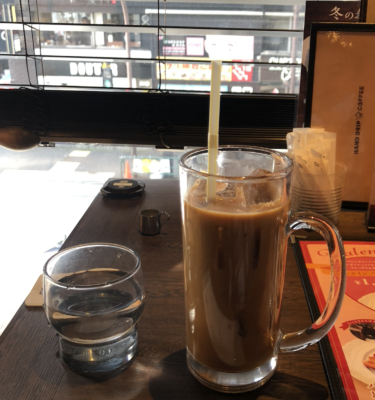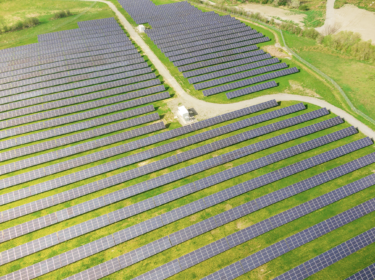はじめに
一石二鳥を狙ったわけではないけど、TEDの動画を眺めていたらソーラーパネルについて論じているのがあったので、試聴してみた。非常にうまくまとめている。太陽光に関しては、以前「ペロブスカイト太陽発電(PSC)の可能性」を投稿した。近年注目されている新技術だけど、今回はこのレベルではなく、太陽光発電の効用と限界、代替としての集光型の太陽光発電、そして環境と共存して活用するための道筋などの基本的な概念について5分ほどの動画に編集されていた。今日はこれを題材にした。
リスニングの強化
昨日、TOEFLを初めて受験した。痛感したのは英語脳ができていないことだ。右の耳から聞こえた言葉が左の耳からスーと抜ける感じ。全然記憶に定着しない。スピードについていけていない部分もあるけど、圧倒的にバッファーメモリーが不足している。PCなら秋葉原でメモリーを購入して強化できるけど、人間の脳は鍛えるしかない。ということで、早速トライしてみた。
TEDの活用
動画になっていて、英語と日本語のスクリプトがあって、TOEFLで出題されそうなアカデミックなコンテンツを探してみた。その条件を完全に満たすものではないけど、TED-edはかなり良い候補だ。
繰り返し試聴して理解度を深める
まず字幕なしで3回試聴。次に日本語の字幕で内容理解。続いて、英語の字幕で内容を確認。最後に字幕なしで動画を試聴。5分程度の動画を6回試聴すると30分ほどかかるけど、結構良い練習になる。
ディクテーションにトライ
本当は字幕なしで書き取るべきだけど、それはハードルが高いので、英語の字幕を再生しながら、スクリプトを書き取った。そうすると、以外の不明な単語は意外と少なかった。初めて見る単語としては、「fossil」だった。これはfossil fuelsとして使われていて、意味は化石燃料だ。英語のWikiで調べると次のような説明があった。このレベルの理解は必須だろう。
A fossil fuel is a hydrocarbon-containing material formed underground from the remains of dead plants and animals that humans extract and burn to release energy for use. The main fossil fuels are coal, petroleum, and natural gas, which humans extract through mining and drilling. Fossil fuels may be burnt to provide heat for use directly, to power engines, or to generate electricity. The principal origin of fossil fuels is the anaerobic decomposition of buried dead organisms, containing organic molecules created in ancient photosynthesis. The transitions from these source materials to high-carbon fossil fuels typically require a geological process of millions of years, sometimes more than 650 million years.
(日本語訳)化石燃料とは、植物や動物の死骸から地下に形成された炭化水素を含む物質で、人間が取り出して燃やすことでエネルギーを放出し、利用するものである。主な化石燃料は、石炭、石油、天然ガスで、人間が採掘や掘削によって取り出したものである。化石燃料は、燃やして直接熱として利用したり、エンジンを動かしたり、発電したりすることができる。 化石燃料の主な起源は、太古の光合成で作られた有機分子を含む生物の死骸が埋もれ、嫌気的に分解されたものである。 このような原料が高炭素の化石燃料になるには、通常、数百万年、時には6億5千万年以上の地質学的プロセスが必要である。
文脈はほぼ理解できるが、記憶に残らない。
わずか5分の動画だけど、1分程度でもう集中力が切れるというか、記憶容量を超える。もう一杯一杯という感じだ。特に最初の試聴ではなかなか脳に届かない。まさに右の耳から左の耳という感じだ。日本語を見たり、英語のスクリプトを見ると理解度が急激に上がる。やはり音だけで理解できるように練習を重ねるしかないのだろう。
今後の課題
サマライズの能力が重要
動画の最初に、砂漠をソーラパネルで覆えば、エネルギー問題は解決するのか?と聞かれている。TOEFLなら、これに対するあなたの考えを話せとか、パッセージの主張を書けとか選べと言ってきそうだ。太陽光発電を砂漠に建設するのみではエネルギー問題は解決しない。その理由は次の3点だとして、次のような展開だろうか。
・砂漠に大規模発電を建設することは地域の生態系や気象、環境への甚大な影響を伴う可能性がある。
・代替案として集光型であれば環境への影響を軽減できるが、消費地まで送電するか、電池で蓄電するか、水素等に変換する必要があるが、まだ効率が低く、経済的ではない。
・太陽光のコストや劇的に低下し、効率も高まっているので、大規模なシステムと中小規模のシステムを最適に組み合わせるべき。特に消費地や僻地での小規模太陽光発電の利用は有効だ。
DeepLで英語に翻訳するとこんな英語になった。ここまで書けない(涙)。
1) The construction of large-scale power generation in deserts may have an enormous impact on the local ecosystem, weather, and environment.
2) As an alternative, Concentrating solar power can reduce the impact on the environment, but it must be transmitted to the point of consumption, stored in batteries, or converted to hydrogen, which is still inefficient and uneconomic.
3) The cost of solar power is dramatically decreasing and its efficiency is increasing, so the best combination of large scale and small to medium scale systems is needed. The use of small-scale solar power generation, especially in consumer areas and remote areas, is effective.
まとめ
今回はTEDの教育分野の動画をTOEFLの学習素材として活用してみた。太陽光のメリットや技術革新の動向だけではなく、そのデメリットや活用の視点まで言及しているのはさすがだ。TOEFLならベロブスカイト太陽電池などを組み合わせて難易度を高めてくるかもしれないと思った。
以上
最後まで読んでいただきありがとうございます。
拝
参考:英文のスクリプト
“We live in a world bathed in 5,000 times more energy than we consume as a species in the year.” Peter Diamandis
Every day, the sands of the Sahara Desert reach temperatures up to 80 degrees Celsius. Stretching over roughly nine million square kilometers, this massive desert receives about 22 million terawatt-hours of energy from the Sun every year. That`s well over 100 times more energy than humanity consumes annually. So, could covering the desert with solar panels solve our energy problems for good?
Solar panels work when light particles hit their surface with enough energy to knock electrons out of their stable bonds. On their journey back to stability, these electrons produce electricity. However, there`s a limit to how much power panels can generate. Solar panels can only interact with certain wavelengths of light, making it impossible to convert over half the sunlight they receive. And even light particles ther can convert often bounce off them. Without ever hitting an electron. But thanks to clever scientists and engineers and substantial government investment, solar panels are generating more electricity than ever. Anti-reflective coatings and patterns on the panel`s surface create more opportunities for incoming light particles to hit electrons. These techniques have increased commercial solar panel efficiency from the low-teens to 25%, with experimental models reaching up to 47%. What`s more, solar has gotten 89% cheaper over the last decade, thanks in part to global supply chains for other technologies that use the same materials. Together, these factors have made solar power the cheapest source of electricity on Earth. Counties including India, China, Egypt, and the US, have already taken these new panels into the desert. Their massive solar farms range from 15 to 56 square jukineters, and when the sun is high in the sky, these plants can provide energy for hundreds of thousands of local residents. But these farms also get extremely hot. The light that solar cells don`t convert or reflect is absorbed as heat, which reduces a panel`s efficiency. And the cooling systems employed by many farms can use huge amounts of energy powering fans or moving water to maintain optimal temperatures. Even with these systems, solar panels in the desert absorb far more heat than the natural sandy environment. This hasn`t been a problem on the scale of existing solar farms. But if we tried to cover the Sahara, this effect could create massive changes in the region`s climate.
Constructing solar farms already disrupts local ecosystems, but a plant of this scale could dramatically transform the desert landscape. Thankfully, solar panels aren`t our only option. And some of the largest solar plants in the world are trying a new approach: giant mirrors. Morocco`s Noor Power Plant, which will eventually cover roughly 30square kilometers of the Sahara, is a concentrated solar power plant. This design reflects light onto a receiver, which converts that energy to heat, and then electricity. These mirrors still create a dangerous temperature shift for local wildlife, but they have less potential to transform the landscape. And since it takes time for the materials being heated to cool off, these plants often continue producing electricity past sunset. Whether they use panels or mirrors, industrial solar farms are often easy to fit into existing energy infrastructure. However, getting their electricity beyond local power grids is much more difficult. Some countries are working on ways to connect electric grids across the globe.
And many farms store energy in massive batteries or convert their electricity into clean gas that can be used later. But right now, these techniques are still too expensive and inefficient to rely on. While still, industrial renewables can share some of the same problems as fossil fuels, relying on destructive mining operations and carbon-emitting global supply chains.
Fortunately, solar can exist on many scales, from industrial solar farms to smaller installations that power individual buildings and rural communities. These projects can supplement energy use or provide a passive source of energy for regions off the grid. And since solar panels rely on o a few simple components, they’re quick to install and relatively easy to update. In fact, it`s this flexibility that enables solar to become so cheap and ubiquitous over the last decade. So if we want to keep up with humanity’s rising energy use, we`ll need answers both big and small.




